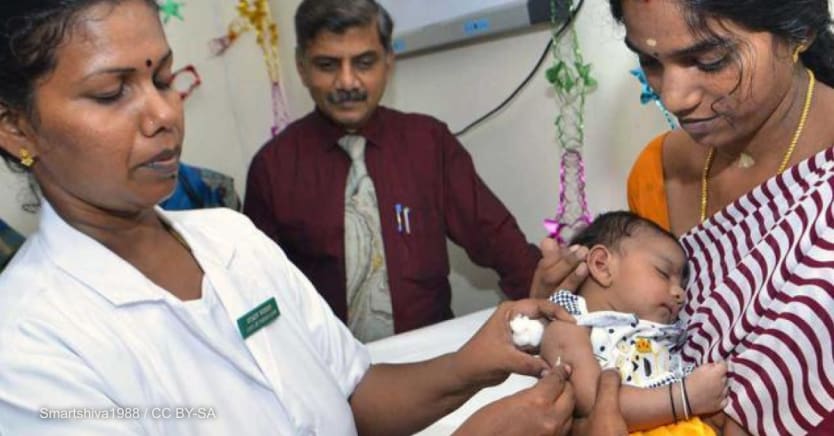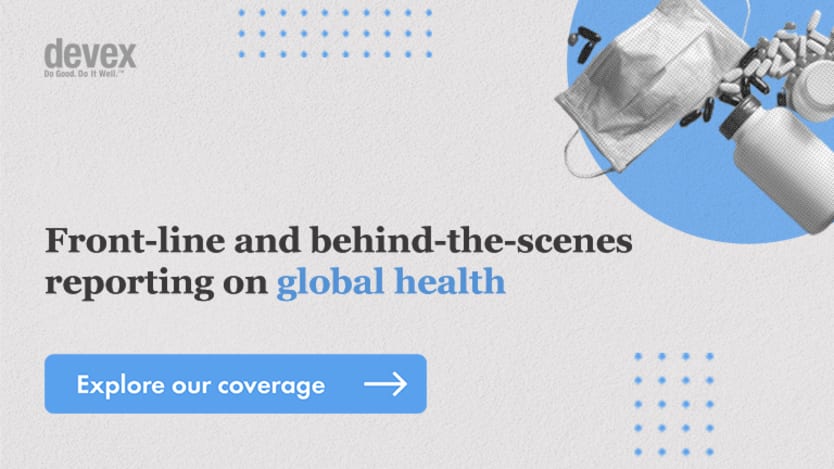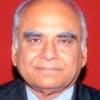
Vaccines and the importance of immunization have taken center stage in public discourse like never before. As countries focus on COVID-19 vaccination campaigns, what does this mean for other infectious and vaccine-preventable diseases such as polio?
At first glance, COVID-19 might look like a major setback for polio eradication, but first impressions can be misleading.
Where we stand right now
Only two countries in the world currently have active wild poliovirus — or WPV — cases: Afghanistan and Pakistan. This is thanks to the efforts of the Global Polio Eradication Initiative, or GPEI — a public-private partnership led by the World Health Organization, Rotary International, UNICEF, the U.S. Centers for Disease Control and Prevention, the Bill & Melinda Gates Foundation, and Gavi, the Vaccine Alliance, as well as national governments.
While two is a small number, all countries remain at risk as long as WPV circulates. The world will only be declared free of WPV three years after the detection of the most recent case. Global certification of eradication also requires international-standard surveillance and proper containment of polioviruses.
After eradication, all use of the oral polio vaccine, or OPV, will end to eliminate the long-term risks of what are known as circulating vaccine-derived polioviruses, or cVDPVs. These are poliovirus vaccine strains that can start circulating in areas with population immunity that is too low. The aim is to ensure that no child will ever again be paralyzed by any type of poliovirus, be it wild or vaccine-derived.
WHO regional polio director expects Taliban to support polio program
Dr. Hamid Jafari, director for polio eradication in the eastern Mediterranean region at the World Health Organization, said the ban on access to Taliban-controlled areas was only on house-to-house vaccinations for security reasons, and not on polio eradication.
Countries can now prepare for the use of the novel oral polio vaccine type 2 — granted emergency use listing by WHO in November — which is a modified version of the monovalent oral poliovirus vaccine type 2, or mOPV2, currently being used to respond to outbreaks of cVDPV type 2. It appears to have all the benefits of mOPV2 but is more stable and thought to be much less likely to revert to a form of poliovirus that can cause paralysis.
Outbreaks of cVDPVs — especially type 2 — have become an increasing challenge in recent years, with cases of cVDPV now outnumbering cases of wild polio and affecting 27 countries. As of Aug. 10, there were 200 cVDPV2 cases globally.
The COVID-19 pandemic — and its associated impact on routine immunization, or RI, programs — have created ideal conditions for further outbreaks of cVDPVs. In fact, 23 million children around the world missed out on basic vaccinations in 2020 due to the disruption in immunization services — 3.7 million more than in 2019.
This highlights the need to move far quicker to implement a recommendation by WHO’s Strategic Advisory Group of Experts on Immunization for countries to introduce two doses of inactivated poliovirus vaccine, or IPV, into RI programs to keep the world free of polio after its eradication.
In addition, significant work is underway to ensure that the polioviruses — which are kept in laboratories or vaccine manufacturing sites — are maintained under proper containment conditions to ensure there are no leaks back into the environment.
COVID-19’s impact on polio immunization
Governments and donors to polio programs across the world have channeled their financial and human resources into the COVID-19 response. GPEI also provided human resources and assets, including disease surveillance capacity — with a total value of $104 million — in some 50 countries to assist with the response.
While COVID-19 has affected the timing and funding of polio eradication, it has also presented a unique opportunity to generate a collaborative global response to infectious diseases and highlight the importance of vaccination.
—The indirect burden of COVID-19 risks translating into less donor funding for polio prevention efforts overall, even though many immunization programs and some screening activities have shown to be cost-effective and even cost-saving.
Some governments could become resistant to swiftly self-funding and adopting an immunization schedule that includes IPV and IPV-containing combination vaccines due to the additional cost burden on health systems during the pandemic. A changed immunization schedule could imply immediate upfront costs, though the overall delivery cost might be lower than that for OPV, which requires a dedicated, colder-than-normal cold chain and sometimes a dedicated workforce.
While RI resources are being reallocated to support a rapid COVID-19 vaccine coverage, we must ensure other immunization programs, such as that of polio, are not negatively affected. The focus should be on increasing coverage, efficiency, and effectiveness of RI through fewer injections and consolidated visits, where families are able to access immunization for multiple diseases.
This will entail a lower risk of exposure to COVID-19 and greater acceptability among parents, owing to lesser visits/injections and time saved. Countries also need more effective deployment of health care workers and volunteers, less use of cold chain capacity, and reduced supply-chain costs.
Combination/hexavalent vaccines could offer a way of achieving these efficiencies in vaccine delivery. The benefits of combination vaccines are already well documented. However, more real-world evidence and data are needed to describe the cost-savings and increased RI coverage that can be achieved through IPV-containing combination/hexavalent vaccines.
Sign up for Devex CheckUp
The must-read weekly newsletter for exclusive global health news and insider insights.
While COVID-19 has affected the timing and funding of polio eradication, it has also presented a unique opportunity to generate a collaborative global response to infectious diseases and highlight the importance of vaccination.
There could be a “silver lining,” as travel restrictions may have limited the spread of polio in countries such as Pakistan and the success of their COVID-19 vaccination program may have boosted overall vaccine confidence. As of the end of August, there has not been a new case of WPV anywhere in the world for seven months.
The rapid mobilization of resources to secure access to a safe and efficacious vaccine is positively unprecedented. GPEI offers tremendous expertise in distributing vaccines equitably, which should be acknowledged and should generate renewed commitment from governments, donors, funders, and public health organizations working toward the dual objectives of making the world polio-free and supporting the response to COVID-19.
This would protect the significant progress made in the past decades and ensure that resources are leveraged to address any possible roadblocks to eradicating polio.
The world can’t afford to have another epidemic of polio after the devastating impact of COVID-19.






